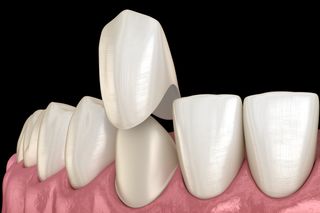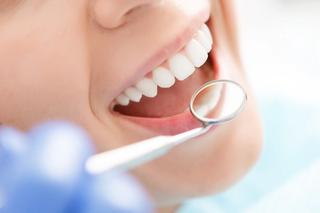Dental Crowns in Bendigo
Prevent damaged teeth from breaks and decay.
At National Dental Care, we offer dental crowns and bridges to restore, rejuvenate and repair your smile. Which one you need depends on how much of your tooth is missing and where in the mouth it is.
Ask our experienced team and they will let you know what your options are.
All these different treatments (Crowns, Bridges, Veneers, Inlays, Onlays) essentially do the same thing: Make your teeth return to their original shape. Dental crowns are an ideal treatment for restoring form and function to a damaged or weak tooth.
However, unlike a filling, they are made in the laboratory and then glued into the mouth afterwards.
What is a dental crown?
A dental crown is a thin, custom-made cover that snugly encases your existing tooth, adding strength, protecting your natural tooth, and enhancing its aesthetic appearance.
Dental crowns are usually made from porcelain, which is a very strong material that can be matched to your natural tooth colour. However, you will also have the choice of a dental crown made from gold, which doesn’t have the same natural look, but does offer added strength - that’s why gold is usually used for back teeth that can’t be seen when you smile, but do more of the heaving lifting when it comes to chewing.
As they are custom made for your individual tooth, they will usually feel, look and perform like your own teeth.
Porcelain crowns
A crown – sometimes referred to as a cap – is a covering that encases the entire tooth surface restoring it to its original shape and size.
Although there are several types of crowns, porcelain (tooth coloured crown) are made to match the shape, size, and colour or your teeth giving you a natural, long-lasting beautiful smile. They are highly durable and will last many years, but like most dental restorations, they may eventually need to be replaced.
Temporary crowns
A temporary crown which will stay on your tooth for approximately two weeks until your new crown is fabricated by a dental laboratory. Once these details are accomplished, your temporary crown will be placed with temporary cement and your bite will be checked to ensure you are biting properly.
You will be given care instructions and encouraged to have regular dental visits to check your new crown.

When should I get a crown?
A crown protects and strengthens tooth structure and is typically used to treat teeth that are:
- Broken or fractured teeth.
- Cosmetic enhancement.
- Fractured / large fillings.
- Decayed teeth – Teeth that have suffered large decay are often very close to needing a root canal. When the decay is removed from your tooth and filled with modern white filling, the tooth is still structurally weak: in these cases a dental crown is the best solution to protect the treated tooth.
- Root canal treatments: A tooth after a root canal treatment is similar to a tooth after large decay: but worse off. With a tooth that has suffered large decay, dental crowns may not be immediately necessary. However, with root canal treatment it is necessary to have a dental crown to ensure the survival of your natural tooth.
The dental crown procedure
A crown procedure usually requires two appointments.
Results may vary in individual cases. The photo(s) used are stock photos of people who are not patients of McCrae Dental Practice, employees or affiliates.
Frquently asked questions
No, getting a dental crown is not painful as your dentist will give you a local anaesthetic to numb the area.
It may be uncomfortable to sit in the chair with your mouth open during treatment, but you can put your hand up for a break at any time.
Yes. A dental crown can greatly improve the strength, health, and appearance of your natural tooth. It is a good solution for several issues, so be sure to discuss getting a crown with your dentist.
They may be able to offer alternative solutions such as dental veneers, or explain why a crown is the best option for your needs.
A dental crown varies depending on factors such as the material, how many crowns you’re getting, and the extent of work required to install the crown. Please get in touch with our friendly team for more information.
Getting a dental crown is a common and highly safe procedure. The most common side effects are tenderness around the site following each procedure.
It is also possible to experience discomfort when the anaesthesia wears off. In this case, you will need to visit your dentist as soon as possible, as the crown may need to be better shaped to your tooth. This is not a common side effect but is something to be aware of.
Over time, your dental crown may chip, break, or even come off. This is not common but can happen due to wear and tear, and can largely be avoided with good care. Should this occur, your dentist will either fix and reattach the crown or have a new one made.








